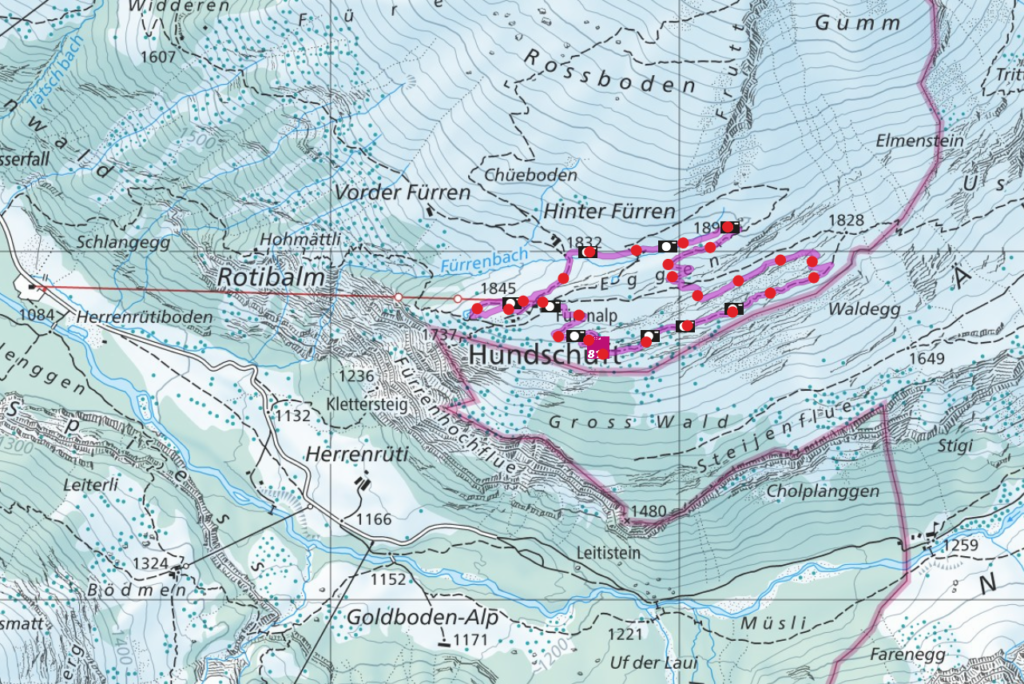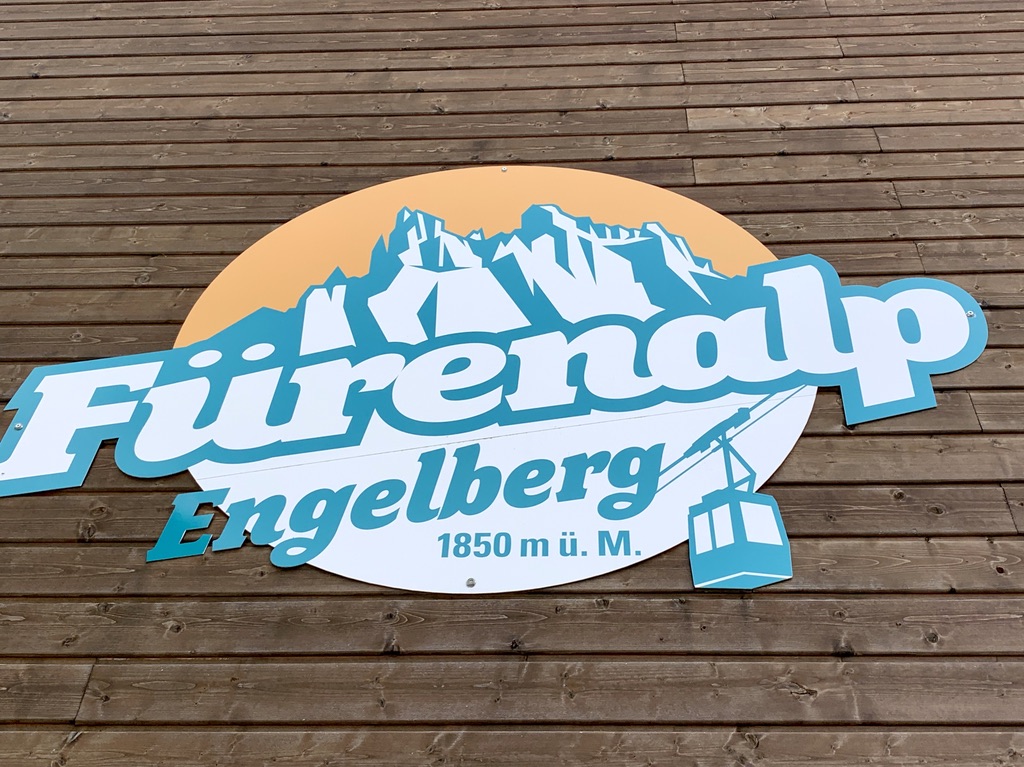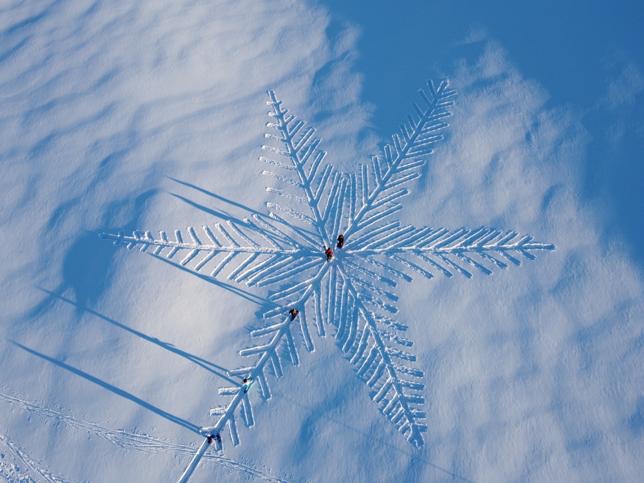Strap on a pair of snowshoes and let the winter wonderland adventures begin! Snowshoes basically turn your hiking boots into “big feet” (Yeti style) which allow you to walk on any kind of snow without sinking too deep or sliding around. Easy to use, inexpensive to rent, and as usual in Switzerland, well-marked trails which meander through enchanted forests, snowfields and easy “peaks”.
Snowshoeing is a great & fun way to hike in winter – just imagine stepping around with your Big Feet in the fresh snow and puffing up a cloud of snow dust behind you 🙂 The pro’s are the same as for hiking: many trails are away from the hustle & bustle of ski resorts, you have the physical challenge of walking and the views all to yourself!
In this post i’ll walk you through How to plan your Snowshoes adventure day, step by step so you can save some time AND make the most of your time!

What you need to go Snowshoeing
1. A pair of Snowshoes
2. A pair of Poles/Sticks (hiking/ski sticks)
3. Backpack
4. Winter Hiking Boots (water proof)
5. A Plan
6. Yourself & your strong legs
- You can mostly rent Snowshoes in snow sports stores either in the city or directly at the mountain where you’re planning to go – check first on the internet and if it’s a popular weekend for ex., you may even want to call ahead and make a reservation.
- Poles can be rented together with the Snowshoes. Tip: choose ones that larger basket at the bottom, so the poles won’t sink in so deep in fresh snow.
- Backpack: for a day trip you need a 20-25L backpack. Best if waterproof.
- Waterproof hiking boots with high ankles are essential . Make sure you’re comfortable in them and wear good quality merino wool socks.
- Below we’ll talk about planning.
- Like for summer hiking, you want to pick trails which are within your physical abilities. Tip: stay on the easier trails to begin with, you’ll find that it takes the whole experience is more intense than hiking.


SAMPLE Planning Session: Step-by-Step guide to planning out your Swnoeshoes hike
I want to walk you through what I normally do to create an itinerary, eliminating the guesswork and giving you all the tools to get yourself out there.
First things first: Research: I live in Zurich, so my first question when I plan an adventure is which day or days can I go and how much time do I have available. I also decide whether it’s a day trip or can I sleepover somewhere? For this example, we’ll assume I’m planning on a Saturday daytrip, leaving roughly at 9:00am and planning to back home by 6pm.
I check my Switzerland Mobility App casting a radius from my home of approx. 1.5hrs of driving or train/bus time and now I can check specifically for snowshoe trails within this area: https://schweizmobil.ch/en/snowshoe-trekking
Let’s say I’ve picked this area here, Furenalp, it’s 1.20hrs driving time, check! Now let’s have a look at their website: https://www.fuerenalp.ch/
Also very helpful when picking an area is to check the local resort websites and check their maps for trails which may not be marked on the app – so always double check and check local blogs, check the tourism office websites and FB groups (some keywords you can use “schneeshuhwandern” and “schweiz”). Cool blog for inspiration: https://www.wanderwego.com/
Important: going off-piste, meaning outside the prepared ski slopes or prepared winter hiking trails (which have been mechanically flattened) can potentially be risky: steeper terrain can be prone to avalanches and you should NOT go if you have no training and/or experience. If you’re a beginner, stick to the easy trails over gently sloping lands, perhaps across the forest, and don’t worry, some of the most panoramic trails are easy circular routes on the mountain peaks!


Once I have an area narrowed down – in this case i’m considering Furenalp, snowshoes trail No. 811 as in the link above – I then check the Weather. First i check it on the Swiss Meteo https://www.meteoschweiz.admin.ch/#tab=forecast-map and double check it on the Begfex app (mountain weather specific) https://www.bergfex.com/lp/wetter/
I also check the webcams to see the current local conditions and know what to expect. For this particular trail in Furenalp, here’s the link to the webcam: https://fuerenalp.roundshot.com/#/
If the stars align right away, i’m a happy camper and I have my plan, i’m done. If not, if the weather forecast looks bad, there’s fog, heavy snowfall or it’s just too cold…. I go back to my original map and pick another area – you’ll be surprised how often you can find good weather pockets in the midst of a gloomy forecast!
This is the most time-consuming part, finding a trail which is within your area, which is rated in the difficulty level you’re comfortable with and which you can complete in the budgeted time, AND has good weather! That’s when the magic happens!
One more thing I want to mention is to start getting in the habit of collecting resort brochures & maps, those little pamphlets and booklets that are just free to pick up at gondola valley stations, mountain railways, chairlifts, ski resorts and other tourist offices – they often have super valuable information which is not published anywhere else. I have 4 boxes bursting with this stuff, and you won’t believe how often I go digging in there to find inspiration.
I have my trail figured out, now what?
Now you need to check the gondola. In this particular case, I would go here: https://www.fuerenalp.ch/en/opening-hours So if I leave at 9am, according to google maps it will take me 1.20hrs to get to the valley station at Furenalp. Park, get my gear sorted, etc, that’s another 15 min, get my ticket for the gondola (or even better, I already bought the ticket online the night before *tip: always check the gondola website beforehand and see if you can buy online & save yourself the line), ride the gondola, bathroom pit stop, maybe a quick coffee? I calculate that I’ll be ready to start the trail at 11:15am.
According to my trail info, i’m doing trail no.811 which is easy, it’s only 3km long and has 190m up and down and is estimated to take 1.39.hrs. So I’m going to add in 1h for stops, pictures, a little snack – the best part of being on the hike is actually drinking in the views, so take it easy 🙂
By my estimates I’ll be done with the trail by 2pm, which fits really nicely with lunch or aprés-trail stop at the mountain restaurant, soaking in the views, and still gives me enough time to catch the gondola down (last one is at 5pm), so that’s it, my plan checks out and I’m ready to go!

- Fun tip: turn your snowshoeing walks into art – what do I mean? have you ever heard of the sacred lines of Nazca, in Peru? where the Incas made incredible designs on the ground which could only really be seen entirely from the sky? Well, you can use the snowshoes to trace a path which is also a design. Find a flat are along your trail, figure out a design – I love doing Mandalas – even better if you are a group and you can all work together, and even better better yet, if you have a drone, you can then fly it and take pictures from above! That’s Swisstagram style!
** Final tips: Pack light & smart: who wants to wander around with extra heavy backpack? pack smartly and bring only what you need. Dress is layers (not cotton, best wear functional material that wicks moisture away), bring a base layer close tot he skin, a warm mid-layer (like a pile jacket), I also recommend a vest (keeps the trunk warm), a down jacket and a wind and water proof jacket. Ski pants, gaiters (if there’s a lot of fresh snow they can really help), a warm hat, gloves, sunglasses, sunscreen, water, snacks, first aid kit (don’t forget the band-aids, it really sucks to get blisters and have no band-aids), your phone and a whole lot of good vibes!
*** Check the weather the day before. I finally learned why the Swiss are always talking about the weather… because it changes rapidly and constantly, especially in the mountains. So, for both safety and pleasure, check those webcams.
Leave me your comments below and share any info or pictures, I love the feedback Until next time 🙂
Giada
